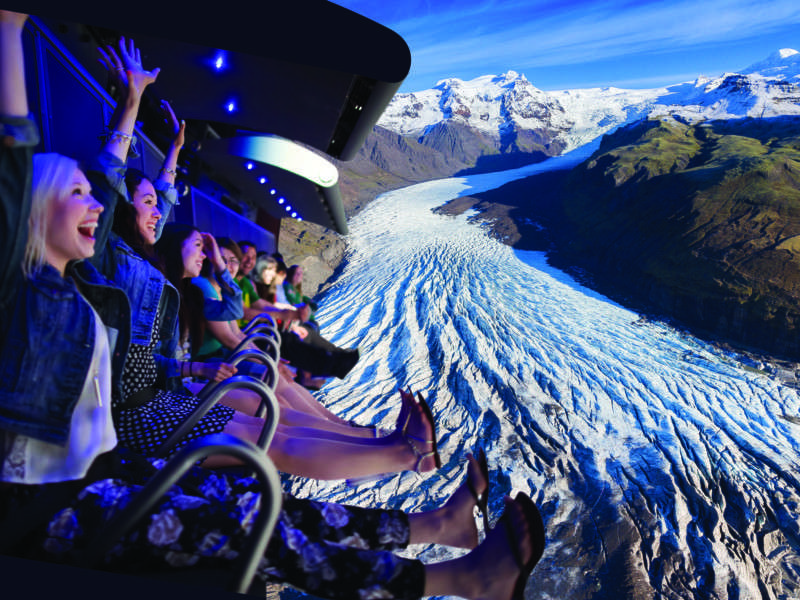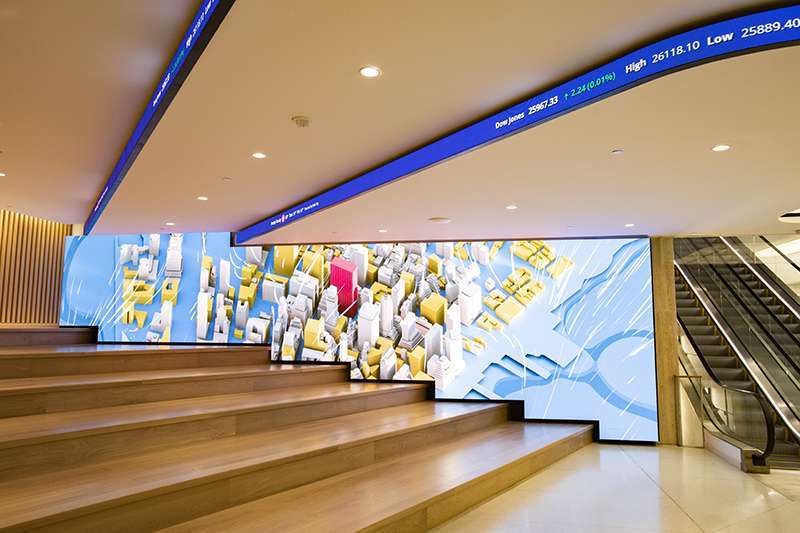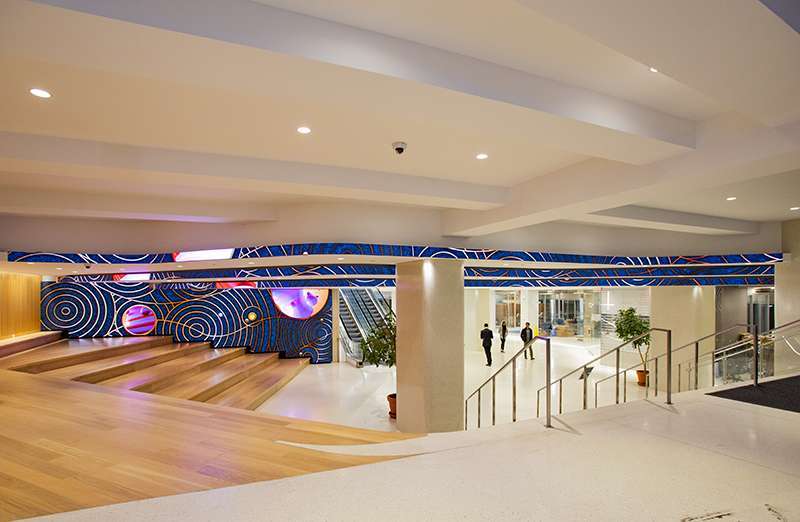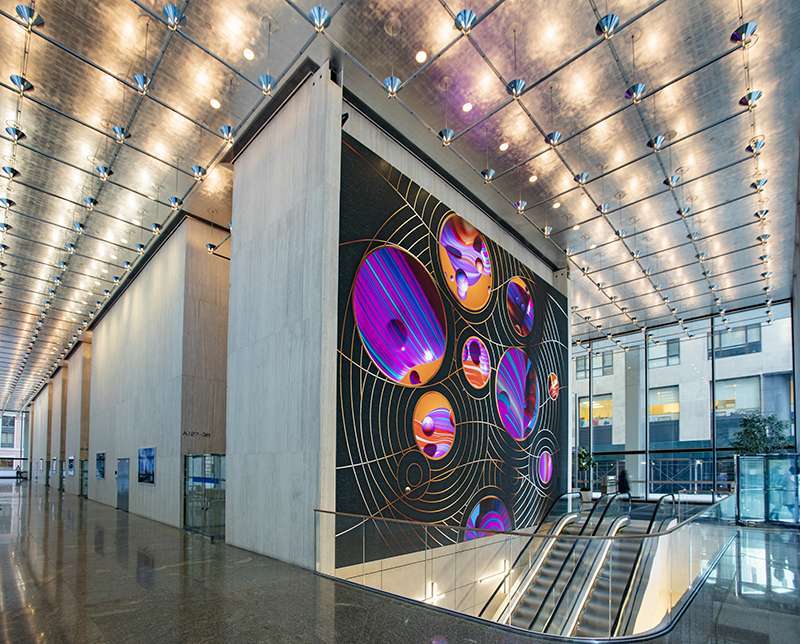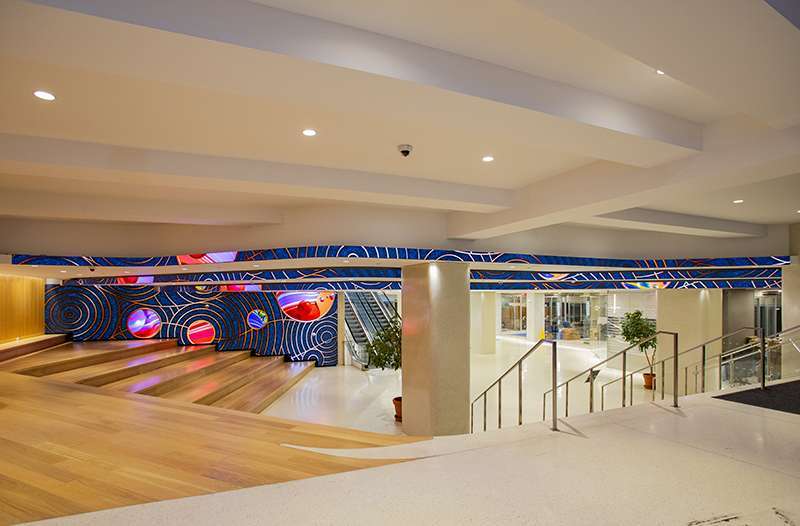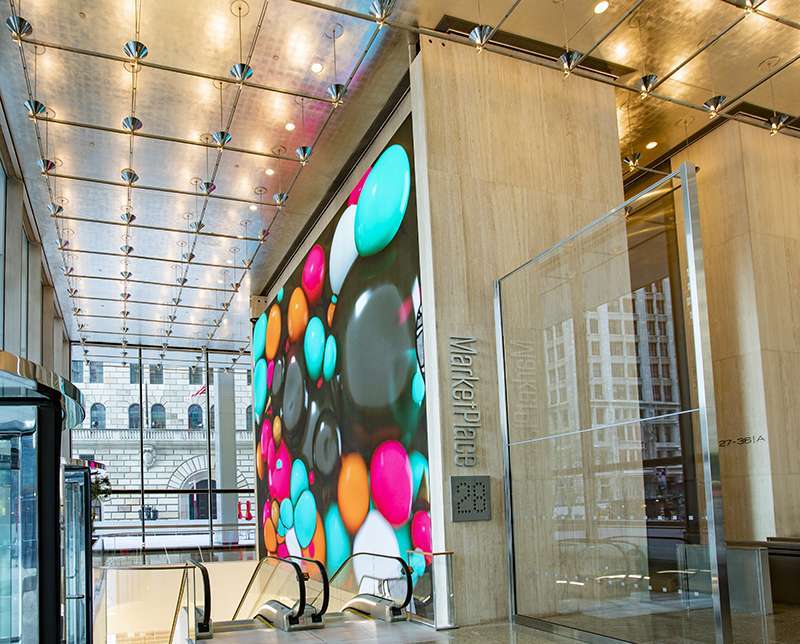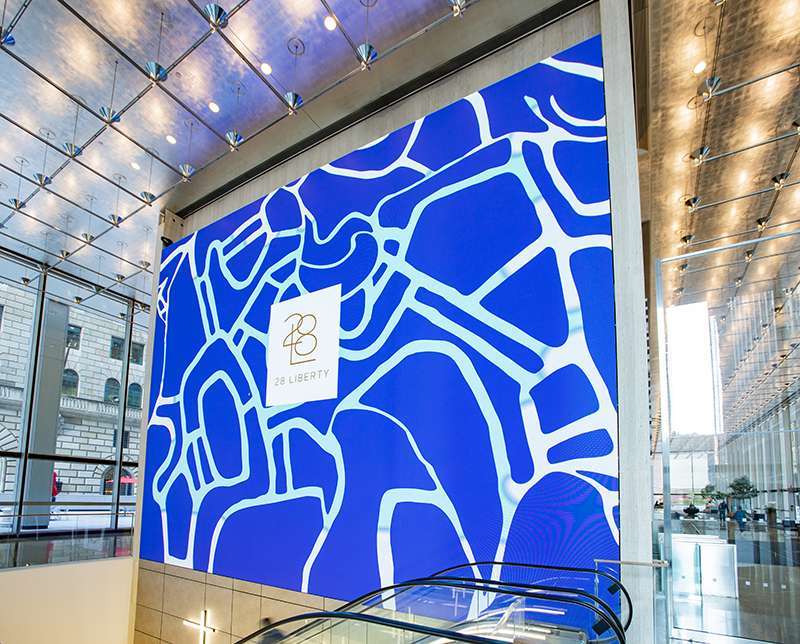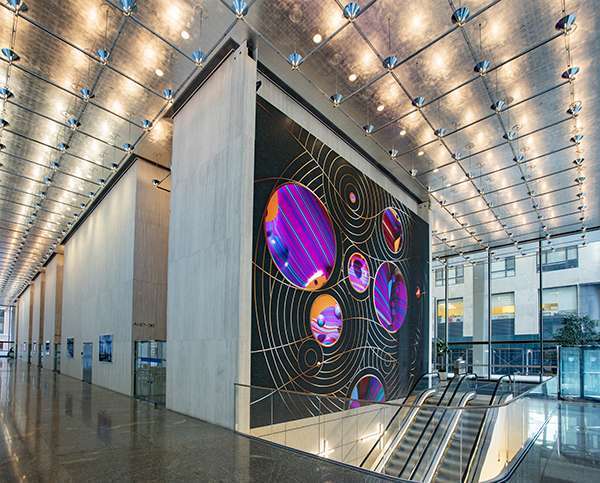The value of Smart Monkeys’ ISAAC for smaller scale projects and standalone attractions
by Judith Rubin
ABOVE: At FlyOver Iceland guests soar over Iceland’s varied landscape. The attraction uses ISAAC as a platform for show control. Photo courtesy of FlyOver Iceland
Within the themed entertainment industry, when integrators, manufacturers and designers spec project systems, increasingly they turn to something called ISAAC.
ISAAC is a product from Smart Monkeys Inc. that brings state-of-the-art, IT-style, network technology to parks and attractions. Smart Monkeys and ISAAC were recently in the news when Electrosonic was honored at the AV Awards for its work on Warner Bros. World™, a new theme park in Abu Dhabi using a network-based, parkwide control system that depends on ISAAC.
ISAAC started to gain real traction in the attractions sector a few years ago, when the Tom Bradley International Terminal at LAX received a TEA Thea Award in 2016. It has since been adopted in large-scale, one-off projects such as those mentioned above, where the design includes multiple units and extensive custom programming. But ISAAC also has a place in smaller and standalone attractions, where operators have been reaping its benefits in smaller, off-the-shelf, plug-and-play form factors. Recent installations include 28 Liberty – a high-end residential development in New York City; and FlyOver Iceland – a new flying theater from destination attraction developer Pursuit.
Other, enthusiastic ISAAC collaborators include leading manufacturers such as show control provider Medialon; and RealMotion, a real-time media server company. Both have partnered with Smart Monkeys to customize their own, proprietary products to be compatible with ISAAC.

ISAAC in Pursuit
Destination attraction operator Pursuit, part of Viad Corp., opted to modernize the technology package for its newest flying theater, using ISAAC in the system of FlyOver Iceland, which launched on August 28, 2019 in Reykjavik. It is the third in a series of standalone “FlyOver” flying theaters that began with FlyOver Canada (Vancouver, 2013) followed by FlyOver America (Minneapolis, 2015). The Vancouver location reports 3 million attendance since opening. Pursuit operates the Vancouver and Reykjavik theaters with others soon to come in Las Vegas (2021) and Toronto (2022).
The FlyOver theaters combine dome projection, a six-DOF motion platform and special effects. The seat bank moves passengers into the dome, feet dangling, to immerse them in a scenic aerial journey through the region. Creative partners on FlyOver Iceland include such distinguished names as Rick Rothschild, Dave Mossop and Moment Factory. The ride system came from Brogent while Kraftwerk provided the ride AV system. The ISAAC show control and house AV systems were provided by Electrosonic. Local installation support was from Exton ehf.
“I was introduced to ISAAC at the Smart Monkeys booth at a past InfoComm show, and I was instantly intrigued,” said Eric Sambell, Global Director, Construction and Entertainment Technology, FlyOver Attractions. “Smart Monkeys was the only company providing a virtualization system for show control, specifically focused on Medialon, which is the core of our show control strategy. Over the couple of years leading up to the FlyOver Iceland project, we worked through the requirements to ensure all the key systems could be virtualized, which allowed us to move forward.”
Describing the role ISAAC plays in the operation of FlyOver Iceland, Sambell said, “ISAAC provides a redundant, virtualized platform for our Medialon show control, GrandMA lighting control and various secondary applications. It coordinates the operation of the ride, preshow spaces and the overall building. Uptime is absolutely critical for a standalone attraction; if we’re not operating there’s no revenue, so redundancy is key. By using ISAAC we were able to eliminate the need to carry multiple spare machines and reduce the need for our staff to know detailed configuration steps to set them up in case of a failure.”

Unpacking redundancy, failover & virtualization
Sambell pointed to virtualization, redundancy and failover as features of ISAAC that made it most appealing for FlyOver attractions. Stephan Villet, Managing Partner, Smart Monkeys, explained that ISAAC, being “redundant by definition,” does away with steps and physical equipment that have traditionally been part of backing up a complex attraction system.
Redundancy and virtualization work hand in hand. “A redundant ISAAC system eliminates the need for special programming as well as separate backup files and equipment,” said Villet. “The user checks a box in the interface to direct the platform to create the backup; everything is hosted internally in virtual form.
If something breaks down, ISAAC detects it and implements the redundancy, according to Villet. “Should there be a hardware failure, the failover response is automatic and immediate on the part of ISAAC. Most of the time – in the few cases we have seen it happen – the owner wasn’t even aware the failure had occurred until we showed them the log.”
How does virtualization work? A typical model for running an attraction is a series of networked PCs loaded with specific software. ISAAC duplicates this model but virtualizes the machines and their content, meaning they don’t exist as physical machines, but rather as software configurations on the ISAAC platform, which lives on a server in an equipment room. The amount of physical equipment and black boxes is reduced and the equipment room itself becomes more like an IT data center. Authorized users access ISAAC through a secure web interface, from any location. Though ISAAC is relatively new in attractions, the base concept is not new. Similar platforms have long been adopted in other sectors.
The shift to using ISAAC has shifted Sambell’s approach to attraction technology. “The biggest change is the focus on networked interfaces, which is required in a virtualized environment. It’s meant changing our mindset on how we deal with things like timecode, contract closures, and RS-232. We now avoid them whenever possible, but otherwise the wide selection of reasonably priced interfaces available allow us to use them where necessary.” He reports that ISAAC will soon be part of FlyOver Canada as well. “We’re running our original hardware from when we opened in 2013, so when it came time to upgrade we decided to change to ISAAC, in a phased implementation,” he said.
MORE ON ISAAC FROM INPARK ISSUE #79.5:
RealMotion and 28 Liberty
RealMotion servers + ISAAC is a technology combination customized within the IEMS (Integrated Environmental Media System) at the Tom Bradley International Terminal cited above – notably for the update of the iconic Clock Tower display – but is also available in a plug-and-play version for smaller attractions. As mentioned earlier, RealMotion has collaborated with Smart Monkeys to configure its product to ensure compatibility with ISAAC, providing its clients with a full array of tools for managing and scheduling media – and supporting creative – in corporate and public spaces such as those found at 28 Liberty.
28 Liberty is the multi-million-dollar transformation of a 60-story, former bank headquarters in lower Manhattan into a high-end residential tower, owned by Sun Glory, Ltd. The project team included Gensler (architecture), Pentagram (graphic design) and Technomedia (design, engineering and installation of the LED system).
Digital content creation studio Float4 was tasked to create, produce and manage content for a 34-foot by 25-foot LED lobby display and LED ribbons in the retail area that showcase eye-catching visuals. Both of these enhancements are powered by a customizable content management system developed on the ISAAC platform, housed on a pair of RealMotion servers.
“The integration of RealMotion into the ISAAC platform allows us to easily offer a customer friendly front end for operation and scheduling of content and control through ISAAC’s content management system,” said Geoffrey Platt, Director of RealMotion. “From the video and content creation viewpoint, we are working in a real time rendering environment which allows quick access and changes to any scene or generative content piece. This also allows us the ability to easily integrate other third-party software and hardware to create interactive experiences.”
“By combining data driven content, refined visuals and a turnkey technological solution, the building is equipped with a 24/7 platform that informs, entertains and engages building occupants and guests,” said Float4 Founder and Creative Director Alexandre Simionescu. “We produced an attraction in the building’s common areas, indirectly driving crowds and revenue to the owners and tenants. One of my favorite capsules is data-driven and displays visuals depicting lower Manhattan and weather conditions that are sourced in real-time. It’s a great way to convey information elegantly,” said Simonescu. “Interstitials, which we use as transitions between content capsules, were also created to echo the property’s iconic art pieces.”
In lower Manhattan, 28 Liberty uses ISAAC to provide real-time information and captivating artwork for residents. Photos courtesy of 28 Liberty
A leading feature of the current version of ISAAC is what Villet termed its “new integratory content media management capability.” A drag-and-drop interface enables it to ingest new content – then distribute, manage and archive it, and make it available for editing – without the user needing to load it onto the server. “Using templates, it can be incorporated and part of the display within seconds,” said Villet. Benefits include protecting IP and brand consistency.
“We primarily work with various departments that specialize in interactivity, visual effects, live event design and general video
design,” said Platt. “From our end we have implemented Smart Monkeys’ API into our RealMotion software to ensure full compatibility with ISAAC. We love our partnership with Smart Monkeys. They share the same values we do with creativity, innovation and being on the leading edge of technology. ISAAC has absolutely changed the way we approach a project. Project teams should be considering it in the conceptual phase.”
Shopping for ISAAC
Smart Monkeys offers ISAAC in two off-the-shelf configurations with smaller attractions in mind: Prelude and Nemesis. Prelude is the smallest, a one-server version with no redundancy. Nemesis is a multi-server, scalable cluster solution with redundancy. Both Prelude and Nemesis have been on the market for some four years and will soon appear on a new, ISAAC-dedicated website.
Smart Monkeys will have an exhibit booth at IAAPA Expo Orlando 2019 demonstrating the workflow of ISAAC and RealMotion. For more information or to set up an appointment, contact Stephan Villet, [email protected]. • • •
A select list of attractions using the ISAAC platform
• 28 Liberty, New York, NY
• FlyOver Iceland, Reykjavik
• The Shed, New York, NY
• The dynamic guitar-shaped tower at the new Hard Rock Guitar hotel in Hollywood, FL
• Easton Town Center, Columbus, OH
• Liberty Center, Liberty Township, OH
• St. Louis Aquarium, St. Louis, MO
• Exelon HQ, Philadelphia, PA
• Comcast Experience, Philadelphia, PA
• Stories of the Bible at the Museum of the Bible, Washington DC


